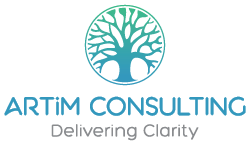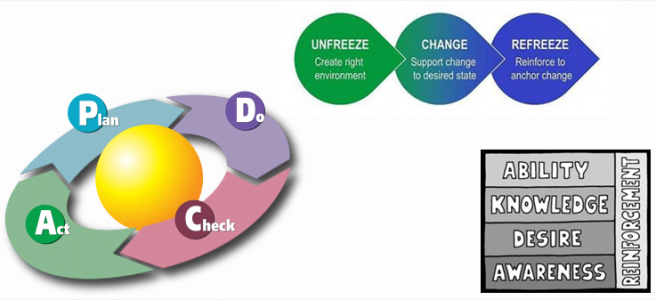In our exploration of strategic alignment thus far, we have concluded that organisations are complex, human, embedded systems. A characteristic of such systems is their unpredictability. This is not just a question of lack of information. Perfect prediction is inherently impossible, i.e. the result of our actions are emergent. So if our goal is to improve alignment in the organisation, we must accept that much of the result of whatever we do is going to be surprising, even for us.
We have also started looking at two possible approaches to improve our ability to predict what will happen. One is the use of frameworks. In the last few posts we looked at some well-known frameworks – and also some that are perhaps a bit removed from the mainstream. As we have seen, there are differences between the frameworks in terms of their purpose, their scope and the underlying assumptions that inform them. So we need to be able to able to critically explore frameworks to pick the one that is best suited to our needs. In the last post we looked at the possibility of combining several frameworks into a single overarching one.
The second approach towards improving our ability to predict and therefore managing risk associated with the change is to adopt a learning orientation. The benefit is that it is not critical that the framework is exactly right for our needs from the start; we can tweak it as we learn more about the framework – and indeed about ourselves!
A few weeks ago we also noted that we are learning anyway, whether or not we are aware of it. It’s just that the more aware we are of the nature of learning and more deliberate our application of this knowledge, the more useful it can be. Let’s summarise what we talked about.
First, there are three types of learning. Single-loop learning is what we mean most of time when we say we are learning. This is the conscious or unconscious acquisition of a competence, i.e. we become better at doing something. We are engaging in double-loop learning when we reflect on our intent, our assumptions and our deep-seated biases. And we are engaging in triple-loop learning when we are incorporating in our conversation the voices of all participants, because it is the right thing to do but also because it is critical for survival, It is actually possible to engage in all three modes of learning simultaneously, a process called duetero-learning.
Second, we explored the relevance of theory to our actions, noting that the only situations where we act without a theoretical basis is physical reflex or its mental counterpart, ingrained habit, neither of which results in learning. In all situations in which we are assessing the situation and choosing an action, consciously or not, we are using some kind of theory. In some cases we articulate this theory but often we don’t. When we don’t articulate our theory, we must rely on our habitual learning processes, not a very effective method because we have a limited and biased view of the world. When we do articulate our theory, we make it possible for others to contribute so we can fill any gaps or correct any errors. Clearly then, becoming aware of, articulating and socialising, wherever possible, the theoretical basis for our actions is the better way to go.
Third, the learning process is accumulative, meaning that we add to our existing store of information and knowledge as we learn. But this is far from a linear progression. Most learning takes place in fits and starts, with spurts when we are learning a lot quickly and plateaus when progress is, sometimes frustratingly, slow. What’s actually happening is that we are learning in iterative cycles. In each cycle we learn something new, add it to what we already knew and then engage in the next cycle. There is evidence that this is a natural process. Even very young children spontaneously engage in this form or learning.
With these three characteristics of learning in mind, let’s look briefly at some well-known models for organisational change.
Lewin’s model has three stages: unfreeze, change and re-freeze. This model reflects the need to overcome the inertia of habit, generally using external constraints or motivators. Kotter proposed a model with eight steps: establishing urgency, forming a coalition, creating a vision, communicating it, empowering others, creating short-term wins, consolidation and institutionalisation. The ADKAR model consists of five steps: developing Awareness, Desire, Knowledge, Ability and Reinforcement as the framework around which to build concepts and tools. A fourth model, PDCA, stands for Plan, Do (as in pilot test), Change and Act. PDCA enables experimentation and confirmation before proceeding.
What’s interesting is that none of these models explicitly cover all the three requirements we identified above. None of them covers different forms of learning or the need for an articulated theory and the only model that supports iterative learning is PDCA.
It is interesting to speculate on why the most popular models of change don’t explicitly address the requirements we identified as critical for sustainable change and I would greatly appreciate any insights you might have about this.
If you are interested in learning more about organisational alignment, how misalignment can arise and what you can do about it join the community. Along the way, I’ll share some tools and frameworks that might help you improve alignment in your organisation

